Related Blogs
March 1, 2022 | Avalon Team
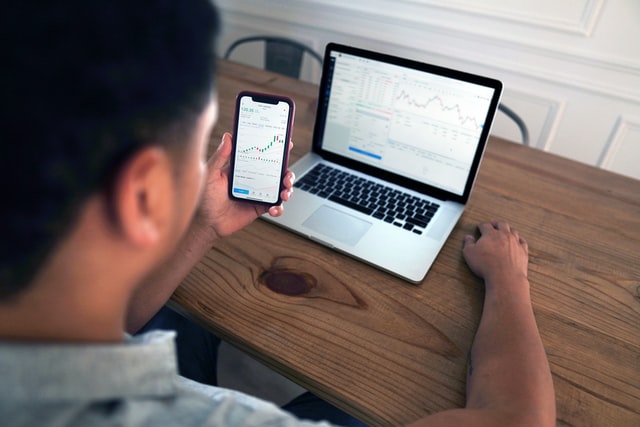 The events taking place in Ukraine and specifically on the people of Ukraine are immeasurable and are well beyond the scope of what we discuss here each week.
The events taking place in Ukraine and specifically on the people of Ukraine are immeasurable and are well beyond the scope of what we discuss here each week.
The impact of such events on global markets, however, IS measurable. And something we are prepared to speak about.
We can clearly see rising Commodity prices. We can see it in falling global stock prices and bond prices and yields.
What investors should know today is the events in Ukraine have not been the cause of the rise in commodity prices – they have exacerbated them.
When we have two commodity-exporting countries (Russia and Ukraine) locked in a military conflict, it is obviously going to put further strain on commodity prices – gas, oil, food, etc.
But the global shift away from growth stocks in favor of the cyclical value names and commodities is not the result of Putin’s invasion of Ukraine.
This process began months ago… and in the case of Commodities, a year ago.
I’ve discussed this at length in previous ADAPT articles. If you’ve been listening – good for you.
Because you were already informed and already had the opportunity to shift out of the high-flying growth sectors, like Tech or Communications, and into the more cyclical value sectors of Energy, Financials, Industrials, and Basic Materials.
But for the rest of you – the ones who want to cling to the buy and hold philosophy or claim you’re “passive” investors… well, I’m sorry.
If you think because you’re invested in the major indexes that you’re a passive investor or that you’re properly diversified, I suggest you take a good hard look at what you own.
First of all, someone is deciding what those indexes invest in – it’s just not you. So if you want to define that as passive, you may want to think again.
The idea that the S&P 500, the NASDAQ, the DJIA, or even the Russell 2000 is going to help you weather current market conditions is likely to leave you feeling the impact of these global shifts where it hurts the most – your pocket.
Just because 40% Technology exposure and 2% Energy worked well in the past, doesn’t mean it will continue to work.
Not today. Not in a rising-rate environment. It’s not gonna happen.
Want proof? Look at these charts comparing Small-Cap GROWTH stocks to Small-Cap VALUE stocks. And Large-Cap GROWTH stocks to Large-Cap VALUE stocks.
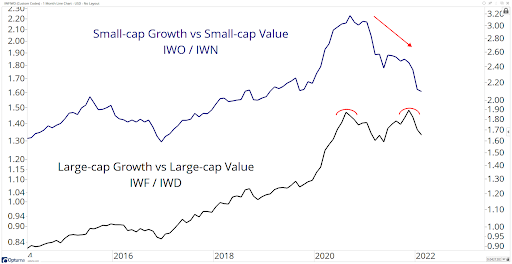
Is this really what you want to own? Both of these relative strength charts are sending a very clear message:
The price of GROWTH stocks is falling in relation to VALUE stocks.
If you own the S&P 500 or Nasdaq100 or Dow Jones Industrial Average, you’re betting that these lines are all suddenly going to reverse and start going up… out of nowhere.
Here’s an example of Growth vs. with the Value S&P 500 (Growth) vs. Brazil (Value).
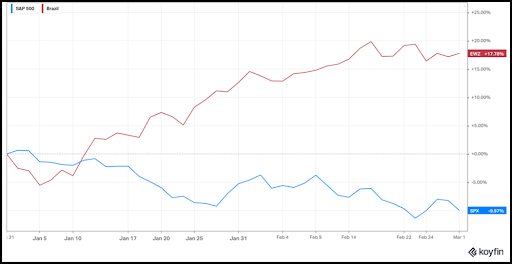
I used this example last week – but it drives home the point, so we’re taking another look.
Brazil YTD 2022 has gained 17.28%… while the Tech heavy S&P 500 index is down nearly -10%.
Here are the holdings of EWZ – the Brazil ETF:
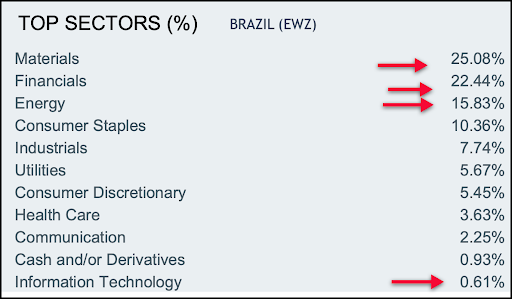
Then there’s the S&P 500 Index or the DJIA – the things a lot of “passive” investors own.
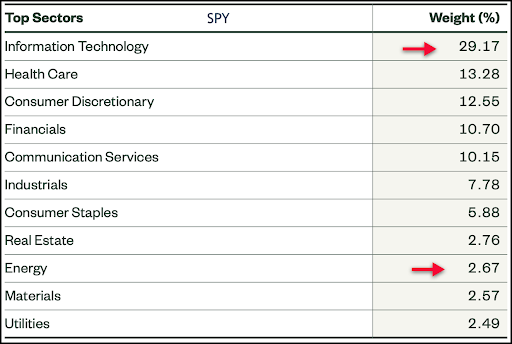
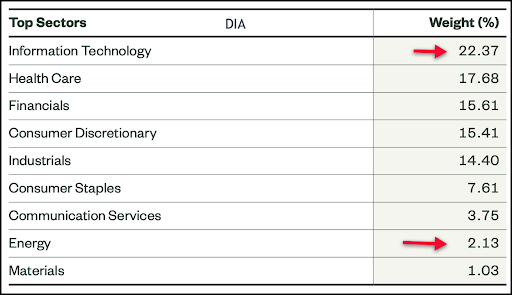
Somebody out there has convinced you that owning 29% Technology and 2% Energy was a good idea.
And what’s been the best performing sector this year? Energy.
What’s been one of the worst? Technology.
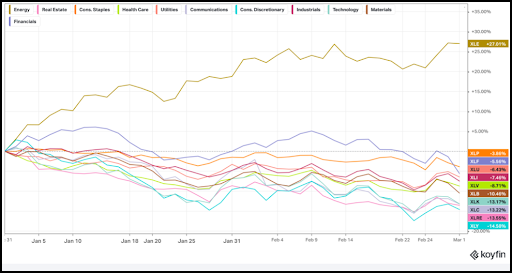
It’s not just Energy… Financials, Basic Materials, and Industrials are all Relative Strength leaders, and each offer industry groups making some noise right now.
My point is, someone is deciding these allocations – it just isn’t you.
Once you come to this realization, you can add or remove exposure with the click of a button.
It’s really not that hard.
If you have any questions or have been considering hiring an advisor, then schedule a free consultation with one of our advisors today. There’s no risk or obligation—let's just talk.
Tags

Free Guide: How to Find the Best Advisor for You
Get our absolutely free guide that covers different types of advisory services you'll encounter, differences between RIAs and broker-dealers, questions you’ll want to ask when interviewing advisors, and data any good financial advisor should know about you and your portfolio.

